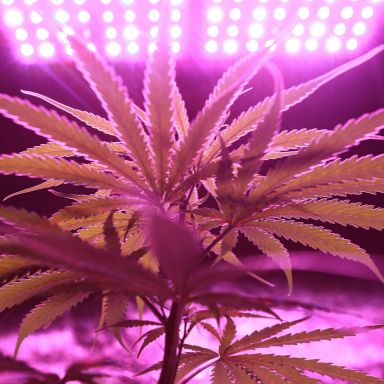Designing a Grow Room
Growing cannabis at home can be both a rewarding and complex endeavor. One of the most critical components is designing an effective grow room. Here’s how to set up a space that will help your cannabis plants thrive:
1. Location Selection
- Space: Choose a space that you can dedicate only to growing. It could be a spare room, a closet, or even a designated area in your basement.
- Privacy: Make sure the room is private and secure to maintain discretion.
- Access: Think about how easy it will be to access for daily checks and care.
2. Room Preparation
- Cleanliness: Start with a clean, pest-free environment. Use bleach or isopropyl alcohol to disinfect surfaces. Dish soap and distilled vinegar mixed together with water in a spray bottle will work in a pinch.
- Insulation: Insulate walls to control temperature and sound. Reflective materials like Mylar can also be used to enhance light absorption.
- Ventilation: Good air flow is crucial. Plan for both intake and exhaust with carbon filters if odor control is necessary.
3. Lighting
- Type: LED lights are energy-efficient and produce less heat, but HPS (High-Pressure Sodium) or MH (Metal Halide) can also be used.
- Intensity: Cannabis requires strong light (around 600-1000 PAR for flowering). Check the specs before you buy!
- Timing: Use timers to simulate natural day/night cycles, generally 18 hours of light for vegetative growth and 12 for flowering.
4. Temperature and Humidity Control
- Temperature: Keep it between 70-85°F (21-29°C) during the day and slightly cooler at night.
- Humidity: Aim for 40-70% humidity, adjusting lower during flowering to prevent mold.
- Equipment: Consider installing an AC unit, dehumidifiers, or humidifiers as needed.


5. Watering and Irrigation
- Hydroponics vs. Soil: Decide if you’ll use soil, which is more forgiving, or hydroponics for potentially higher yields but greater complexity.
- Water Quality: Use pH-balanced water (5.5-6.5). RO (Reverse osmosis) or distilled water might be needed if tap water is too hard.
- Drainage: Ensure good drainage to prevent root rot, especially in soil setups.
6. Air Circulation
- Fans: Oscillating fans help strengthen plant stems and distribute CO2 evenly.
- Carbon Dioxide: Supplementing CO2 can boost growth but requires careful management of ventilation.
7. Nutrients
- Feeding Schedule: Cannabis has different nutrient needs during vegetative and flowering stages. Use quality cannabis-specific nutrients.
- pH Monitoring: Regularly check and adjust the pH of your nutrient solution.
8. Security and Discretion
- Locks: Secure your grow room to prevent unauthorized access.
- Odor Control: Carbon Filters are essential for managing odor, especially in flowering stages. It gets stinky okay!
9. Pest and Disease Management
- Prevention: Keep the environment clean, and consider beneficial insects like ladybugs for natural pest control. For outdoor grows obviously. Neem Oil is ok in the vegetative stage in my experience.
- Monitoring: Regularly inspect plants for signs of pests or diseases. Beware organic soil for indoor use, they almost always come with fungus gnats.
10. Space Efficiency
- Vertical Growing: Use vertical space with trellises or SCROG (Screen of Green) methods to maximize light exposure. It really helps, trust me.
- Plant Spacing: Ensure adequate space between plants for air flow and light penetration. It helps prevent the spread of disease and pests like spider mites.
11. Legal Considerations
- Compliance: Ensure your grow setup complies with local laws regarding cannabis cultivation, including plant counts, security measures, and odor control. So don’t blame me if you do something stupid.
Conclusion
Designing a cannabis grow room involves balancing environmental control, plant needs, and legal considerations. It’s an art and science, requiring patience and continuous learning. Start small, learn from each cycle, and scale up as you gain confidence and skill. Remember, the health of your plants is directly influenced by the health of your grow environment.
Disclaimer: This guide is for informational purposes only. Always adhere to local laws regarding cannabis cultivation. Consult with professionals for legal, medical, or specific cultivation advice.

